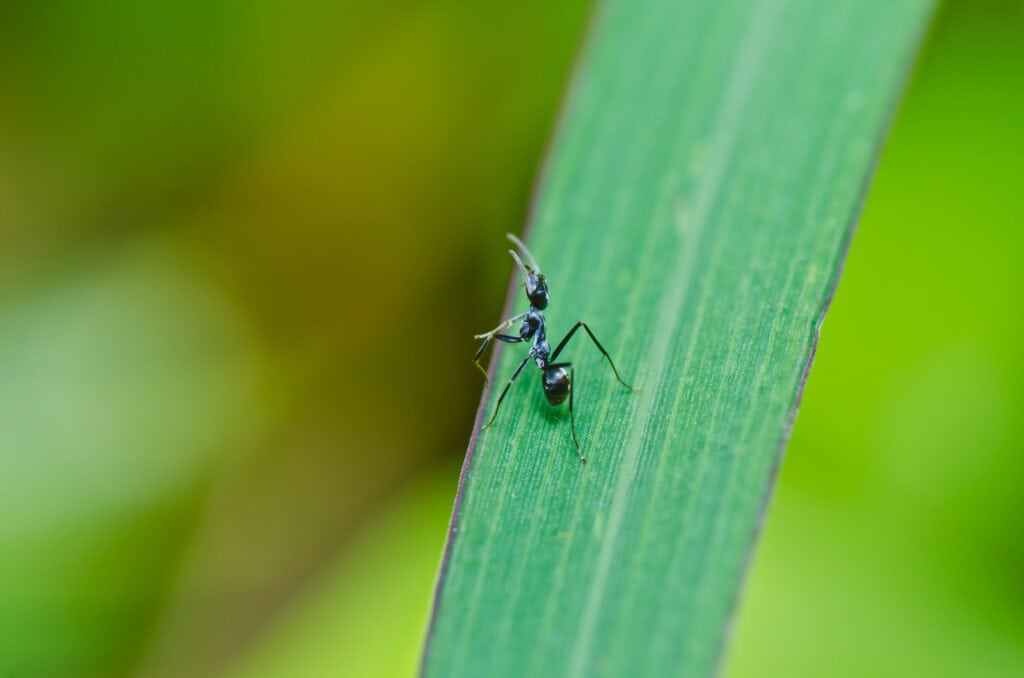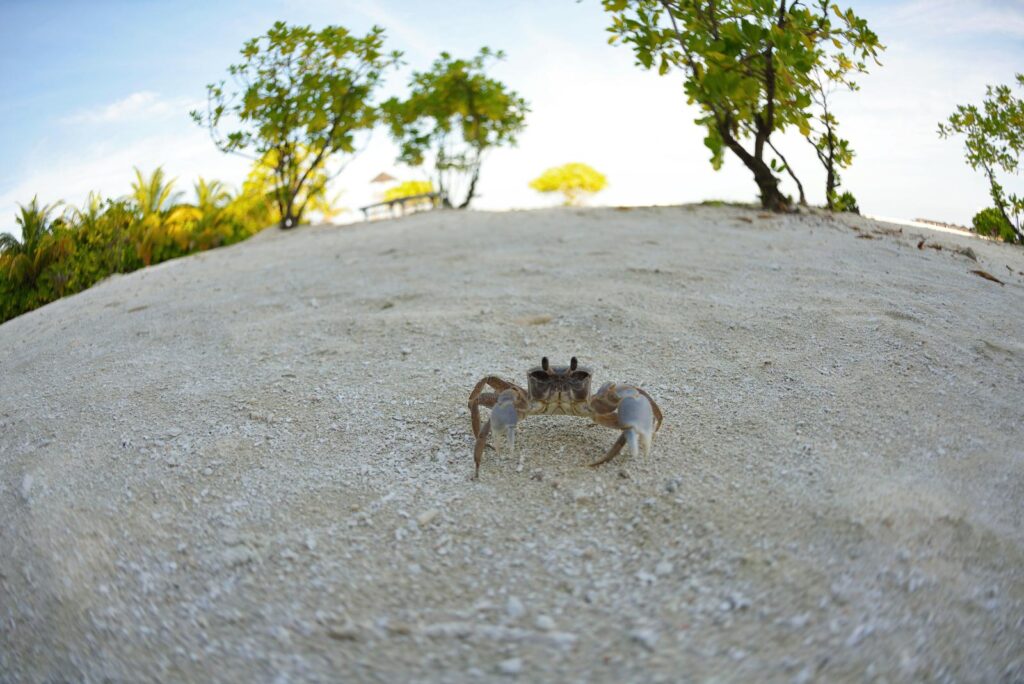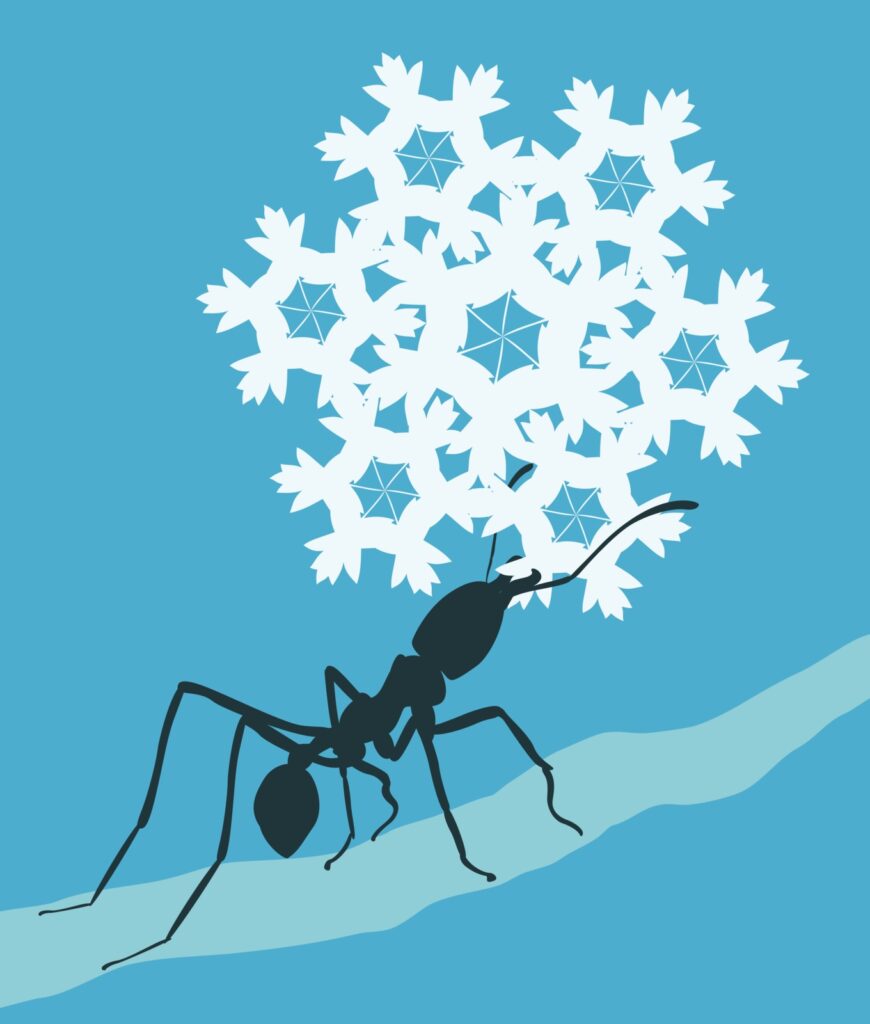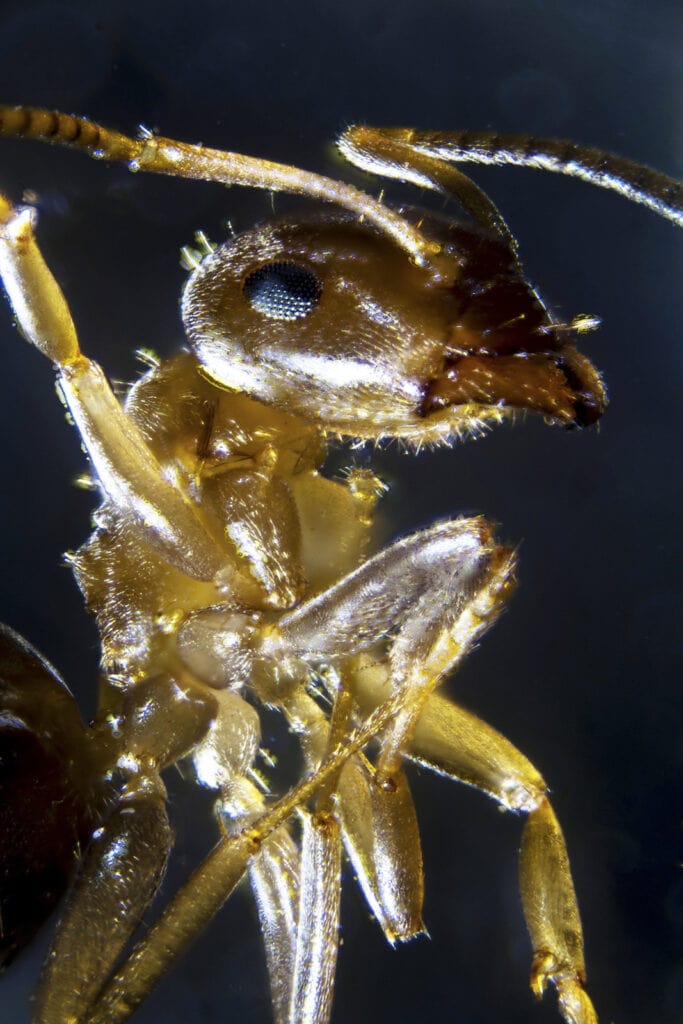Like humans, ants have a body structure designed for specific functions to survive their daily hustles. But seeing their body size makes you wonder how they can carry all that heavy food back to their colony. Does an ant have a backbone? Is that the reason that the ant can carry THAT much weight?
All invertebrate insects, such as ants, have a body structure with three main parts: the head, thorax, and abdomen. Invertebrates don’t have a backbone, but ants are still strong enough to carry food that is upwards of 3000 times their size in weight without one.
Animals are called vertebrates if they have a backbone.
Ants are not part of this category, but what ants do have as their outer shield from predatory attacks is an exoskeleton made up of a material called Chitin.
The difference between an exoskeleton and a backbone is that the former is outer support for the insects, while the latter is a skeleton found internally. (Source, Source)
In this article, we will go through ant anatomy, what tactics and biological advantages ants have to survive attacks from predators, and how they can still be that strong without a backbone.

Do ants have bones?
No Ant species have bones, and this is because they are invertebrate insects, and any animal that is an invertebrate does not have bones. Instead, they have a protective barrier called an exoskeleton, an outward alternative to having an internal skeleton for support.
Let’s dive deep into ant anatomy and physiology to understand where ants draw their incredible strength from.
Anatomy of Ants
Head
This comprises of compound eyes, which are not too helpful because most ants have poor eyesight.
Thus, ants mostly rely on chemical senses and physical contact; the mandibles, an ant’s most important weapon used for holding, biting, crushing, digging, and hunting; and the antennae, used for their senses of touch and smell.
Mesosoma
This is an ant’s middle body part, containing the ant’s muscular components that enable head and leg movements.
The three legs from each side (six legs total) make ants run much faster than other insects comparable to their size.
The end part of their legs is a hooked claw utilized to climb and hang on to different objects.

Gaster
The abdominal segment of an ant is where its heart, digestive system, and other vital organs lie.
Ant members of the formicinae subfamily have an acid pore subsection to discharge formic acid as a defense mechanism.
They use this when they feel danger, usually caused by invaders approaching their nest or colony.
Petiole
Situated between the gaster and the mesosoma is an ant’s petiole (and postpetiole in the Myrmicinae subfamily of ants).
This body part allows flexibility and is used to bend the gaster forward to emit a formic acid or sting as a defense.
Exoskeleton
Finally, the exterior shell structure makes ants safe and protected from force and impact.
It is made of Chitin, a natural polymer found in fungi cell walls. Other animals with an exoskeleton are crabs, shrimps, and crustaceans.
Does an ant have an exoskeleton?
Also known as an integument, ants have an exoskeleton for protection from external factors. As opposed to having bones, which are found internally, the exoskeleton is the outer part of an ant’s body structure. This is a good enough defense from predators and other external elements for ants to thrive.
Exoskeletons consist of four key layers: the epidermis, basement membrane, epicuticle, and procuticle.
All of these work in synergy to produce optimal strength, primarily due to the ant’s unique muscular system and body composition.
Despite having smaller bodies, insects generally have more muscles than vertebrates, owing to the bigger internal surface area that the exoskeleton provides.
Think about it, since ants have no bones, biologically, they can grow muscles at a much higher percentage than humans and other mammals.

The epicuticle part of the exoskeleton, moreover, is responsible for preventing water loss and helps to block impact from foreign matters.
This makes the structure an adequate defense gear against predators while keeping the vital organs safe inside. (Source)
What Is the Ant Exoskeleton Made Out Of?
An ant’s exoskeleton is made out of Chitin, which is what other invertebrates’ exoskeleton is also made of. Chitin is a semi-transparent substance that makes up the outer body structure their protection. This is the alternative to having bones, which only vertebrate animals have.
Chitin is a natural polymer made of amino sugars.
It is also found in the cell walls of fungi, fish scales, and in the external skeletons of other invertebrates like crabs, shrimps, lobsters, spiders, and crustaceans.

The Advantages of an Exoskeleton
An exoskeleton serves as the body structure, but on the outside. The advantages this provides are protection and support against external factors like predators, and it gives invertebrates armor to shield their fragile bodies from random external events. On top of that, an exoskeleton is flexible, tough, and even waterproof.
Other advantages include
Protection for the internal organs
With its rigid protective layer, it serves to protect muscle attachments and vital organs, including the digestive and nervous systems.
Without an exoskeleton, ants are less likely to roam freely. Without this exoskeleton, this would make foraging for food tough, potentially making ants timid to follow other pheromone trails.
Protection against temperature fluctuations and water loss
The exoskeleton helps to prevent desiccation or water loss, especially during the dry season.
Also, the exoskeleton will further protect ants from changes in the weather, either from extreme heat during summer or coldness in the winter.

Protection against predator attacks
Because of their size, it is difficult for ants to defend themselves without an outer layer.
This outer layer will serve as their armor and shield them from force and impact.
This gives them an advantage, even with their small size and vulnerability, having few weak spots on their body susceptible to attack.
Think of this in the same way a turtle is protected from predators.
Protection against incapacitation
Ants undergo the shedding process, allowing them to expand and restore their exoskeleton through water vapor absorption.
This means that when an insect becomes too big for its size, molting will enable it to shrink and undergo the process of restoration for optimal growth and shell regeneration.
The Disadvantages of an Exoskeleton
One disadvantage of having an exoskeleton is the molting process that it periodically needs to go through. During shedding, insects are left helpless while their exoskeleton is yet to harden. This could put the ant’s life in danger, not having any protection during this time.
Other disadvantages include An Exoskeleton:
Insufficient hardness
Ant exoskeletons are tough but may not be enough to survive attacks from their bigger enemies and invaders of their colony.
Damage and infection to the exoskeleton can occur after an attack from predators, which can even result in a quick death in the ants.
Shedding leaves the ant unprotected
Also called ecdysis, the molting process involves softening the hard exoskeleton to make way for a new one.
Ants are left vulnerable at this point, and the attacks from potential predators and external forces during the slow process of shedding leave them helpless.

The healing process is slow
It takes time to heal the area when damage is done in the exoskeleton or when ants are in the molting process.
Consequently, ants are left at their weakest state, unable to eat or adequately function, as no outer layer will shield them from external triggers.
You can read more about these here (Source)
Do ants have shells?
Ants have an exoskeleton that acts as their hard outer shell, protecting them and their vital organs from force and impact. Their exoskeleton is flexible, rigid, and waterproof, so they can survive floods by forming rafts to float on water.
But their “shells” are technically called an exoskeleton, which, in addition to serving as a protective barrier against external forces, keep the muscles and soft tissues preserved, prevent water loss, and provide leverage to the insects.
What are invertebrate insects?
The animal kingdom is classified into two categories, namely vertebrates and invertebrates. The latter are animals, such as insects, that don’t have a backbone for outward support and protection. A whopping 95 percent of animals on earth are classified as invertebrates.
Trivia: all insects are invertebrates, but not all invertebrates are insects.
Jellyfish, sponges, lobsters, spiders, starfish, worms, centipedes, and snails are other common examples of invertebrates and arthropods for the same reason as insects…
They don’t have an internal skeleton. (Source)
Are human beings considered vertebrate animals?
Humans have an endoskeleton (not an exoskeleton), a qualifying trait to be classified as a vertebrate. Although technically, humans are classified as warm-blooded mammals. But don’t get confused: mammals are a group of vertebrate animals, too, since they have bones that create an internal structure.

Final Thoughts, Does A Ant Have A Backbone?
Ants being deprived of a backbone is replaced by the equally protective and seemingly advantageous rigid exoskeleton.
It is made up of Chitin, a multilayer substance and natural polymer found in fungi cell walls and other invertebrates such as crabs, crustaceans, and lobsters.
Invertebrates are animals that don’t have internal skeletons and instead wear theirs on the outside.
While ants are considered pests that ruin plants and infest homes, they fulfill their ecological duties as decomposers and prey to their predators.
They need protection to defend themselves from enemies and function well in the environment.
And luckily, they have it, thanks to their hard, strong, and waterproof exoskeleton!
